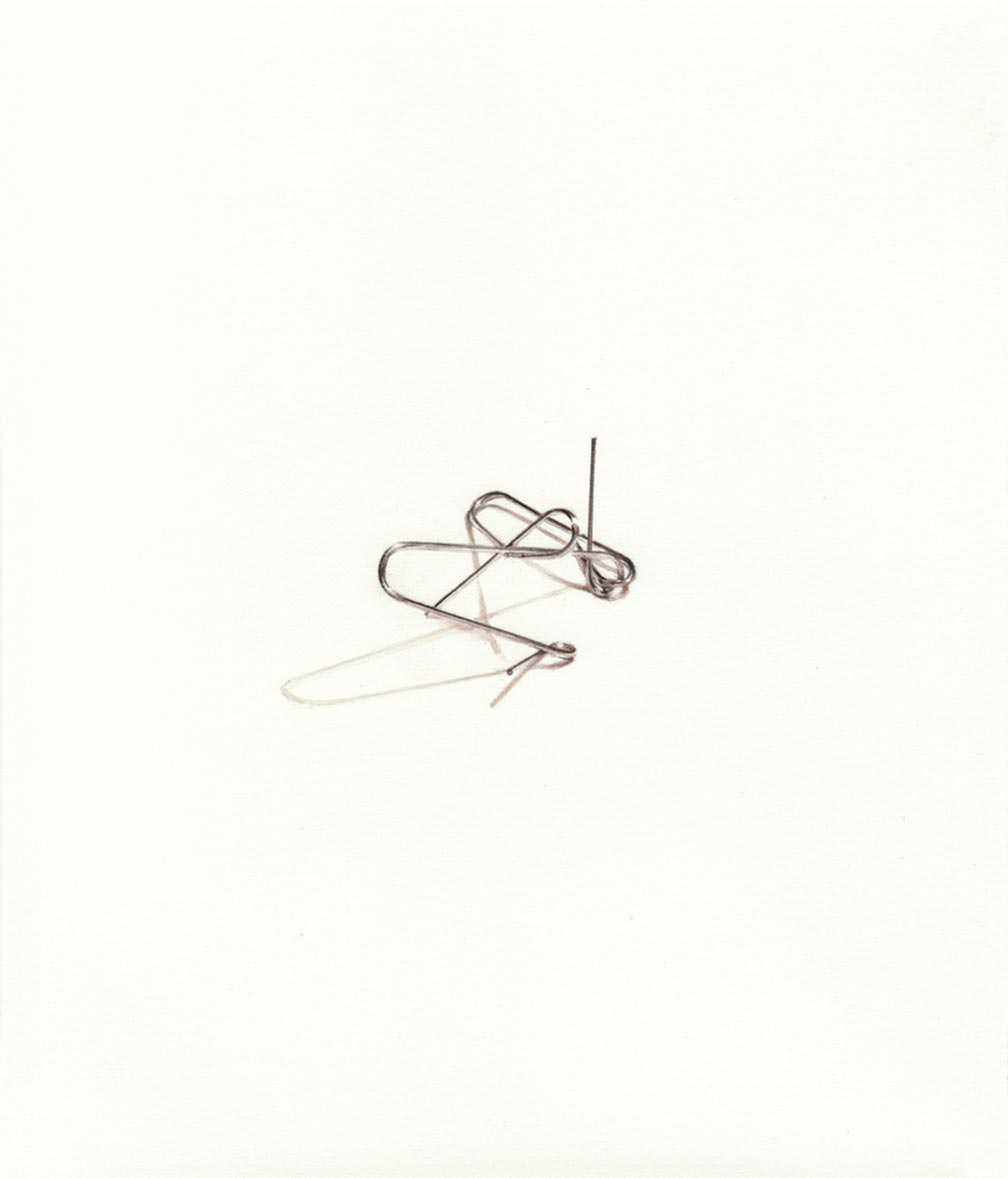

Karen
Watercolor on Paper
I tend to doodle quite a bit, mostly nonsensical drawings that sometimes border on an idea or observation. Rather than keeping a tidy journal, which I always plan to do or often just feel I should, I make these marks on discarded envelopes, paper scraps or napkins. Typically, they continue toward their final destination of my wastebasket, though sometimes the doodles end up in a drawer or folder if I feel a larger idea is lurking within.
Occasionally, if I am bored or lacking ideas, I will sift through the piles of doodles and sketches trying to pull out content and hidden thoughts that may lead to a new direction within my work. On such an occasion, while looking absently through a pile, I noticed some crude little paperclip drawings on a torn envelope. The paperclips were bent out of shape but stood distinctly as paperclips among other abstract marks and drawings. I had taken time to add a shadow and some shading, which somehow gave the drawing a life beyond the envelope.
An architect bent paperclips into shapes that mimicked building shapes and were structurally sound when balanced on their fulcrum. A seamstress molded her paperclips into elegant bows and knots while maintaining the basic paperclip contour.
Steve
Watercolor on Paper
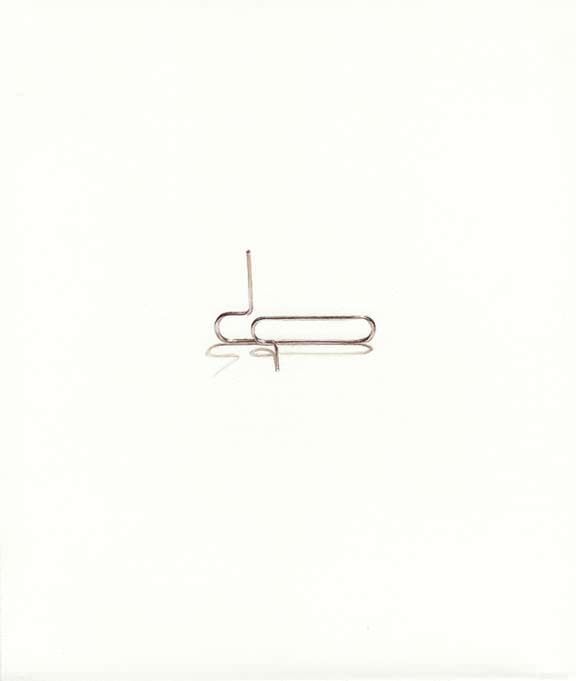

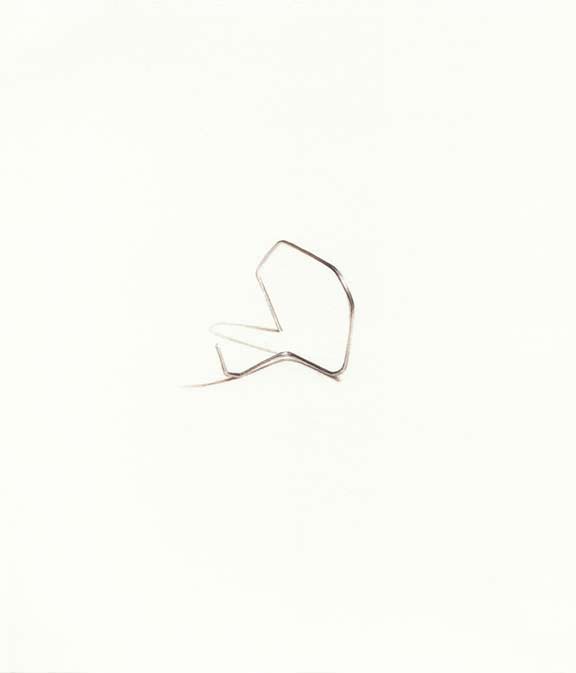

Rosalida
Watercolor on Paper
I decided to use this object as a simple exercise in direct observation. The first attempts, while not very good, were still promising. My shadows were too heavy, the object seemed too large in frame, and I was breaking a watercolor cardinal rule by using heightened white on the highlights. Yet, there was something oddly compelling about this simple, ubiquitous object isolated in frame.
Once I began painting different paperclips that I had bent myself, I quickly noticed a pattern developing. I was continually bending them into similar shapes and unable to get a good variety to paint from. While I was still unclear on my direction with these paintings, I sought the help of other people in neighboring studios.
These were people working in a variety of disciplines and backgrounds quite different from my own. I gave each person a handful of paperclips to mold and twist. The results were surprising to me. Although the shapes varied from person to person, each individual’s paperclips formed a common pattern, similar to my own. For instance, one individual gravitated toward organic round shapes, and another consistently used angular movements to bend the clip.
These shapes also seemed to illustrate the sensibility and personality of the individuals as well.
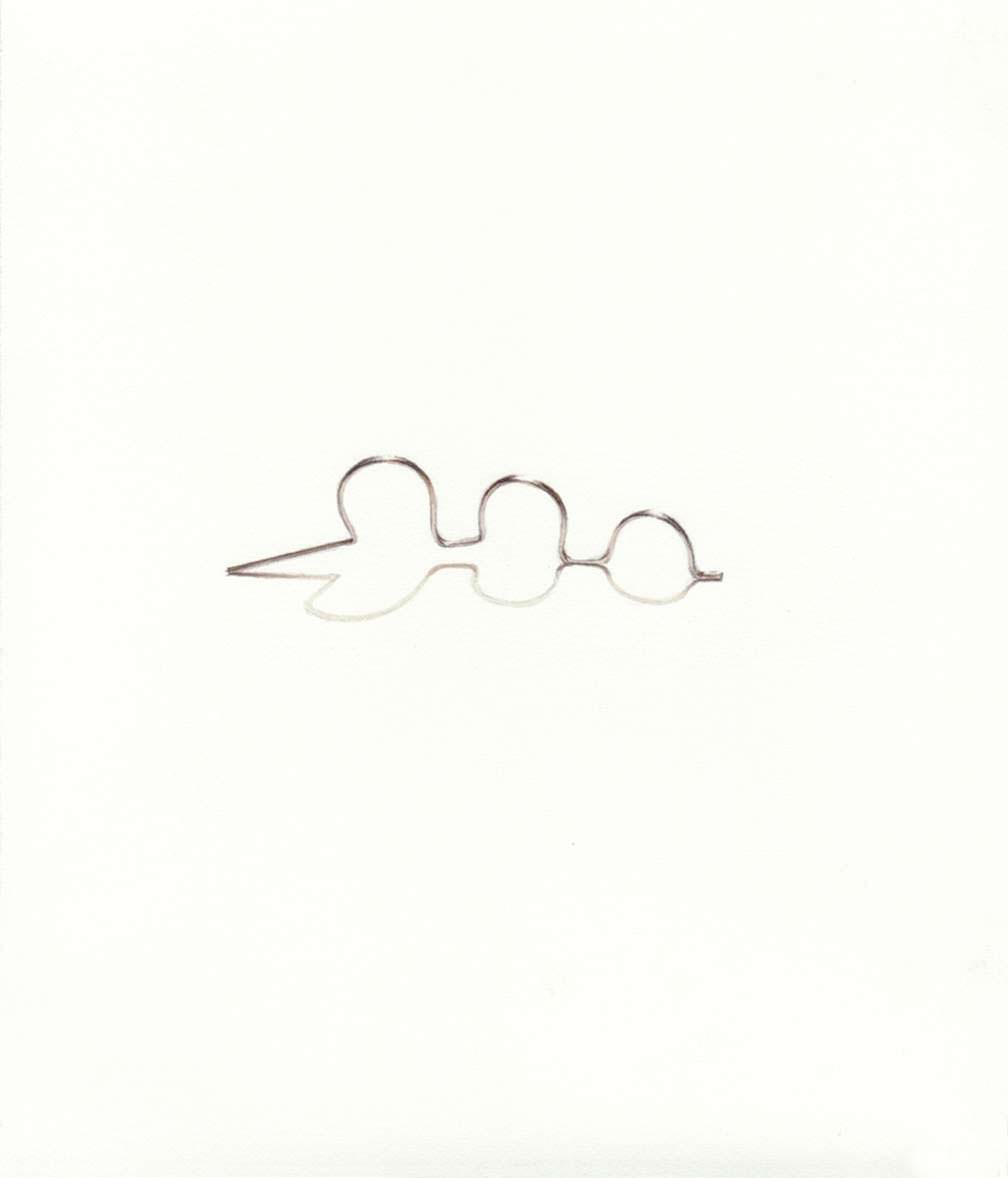

Megan
Watercolor on Paper
In some cases, the person’s occupation played a role in the manipulated shapes. An architect bent paperclips into shapes that mimicked building shapes and were structurally sound when balanced on their fulcrum. A seamstress molded her paperclips into elegant bows and knots while maintaining the basic paperclip contour. The most amusing was the photographer who could not create 3-D shapes with his paperclips; instead they always laid flat on the table like a photograph. It was as if it had not occurred to him to do anything different. Naturally, people would draw from their own interests and visual cues to dictate the forms they created.
These shapes also seemed to illustrate the sensibility and personality of the individuals as well.
At one point or another, almost everyone has turned this simple, common object into something other than its original shape. Is it possible that these miniature sculptures convey the distinct personality of their creator? In most cases I believe so. In some sense, these paintings double as portraits of the individuals themselves.


Paul
Watercolor on Paper


Honah Lee
Watercolor on Paper
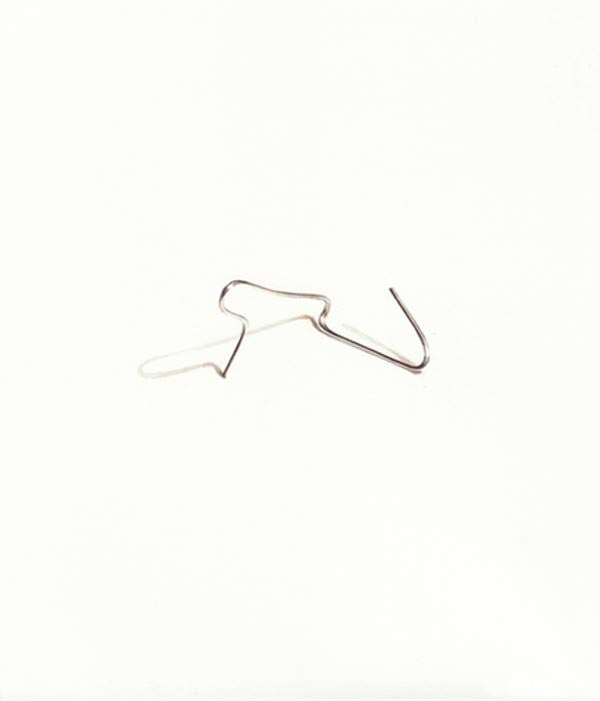

Eric
Watercolor on Paper
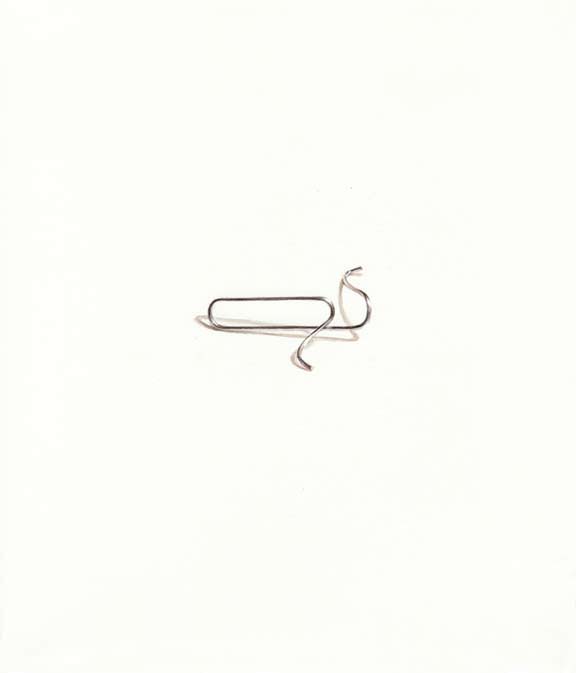

Chris
Watercolor on Paper

